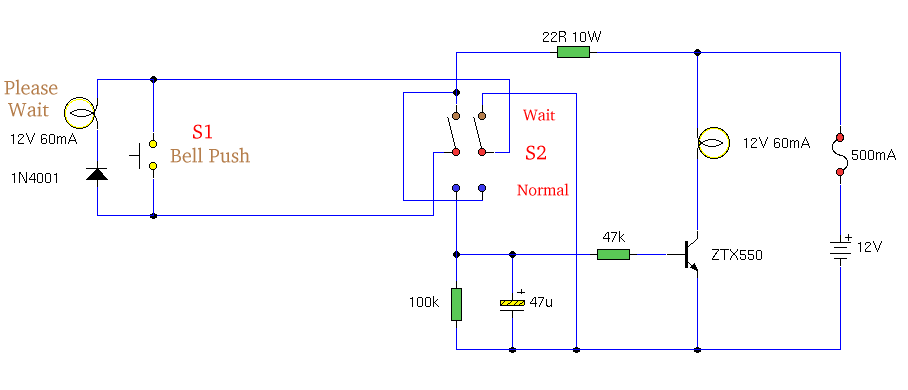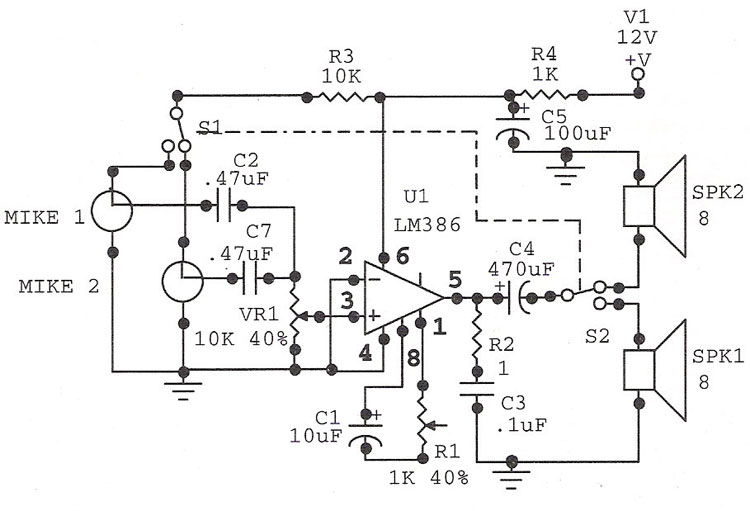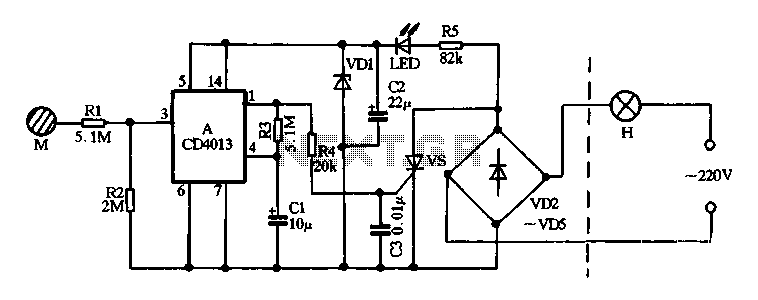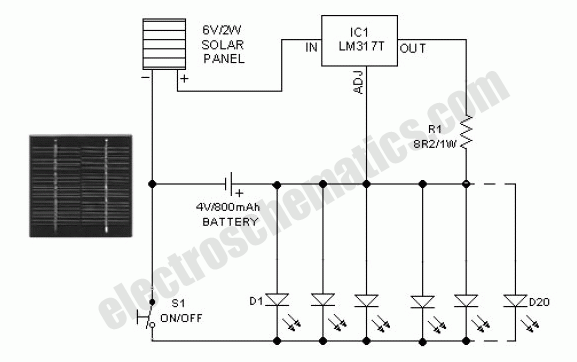
Door chimes delay
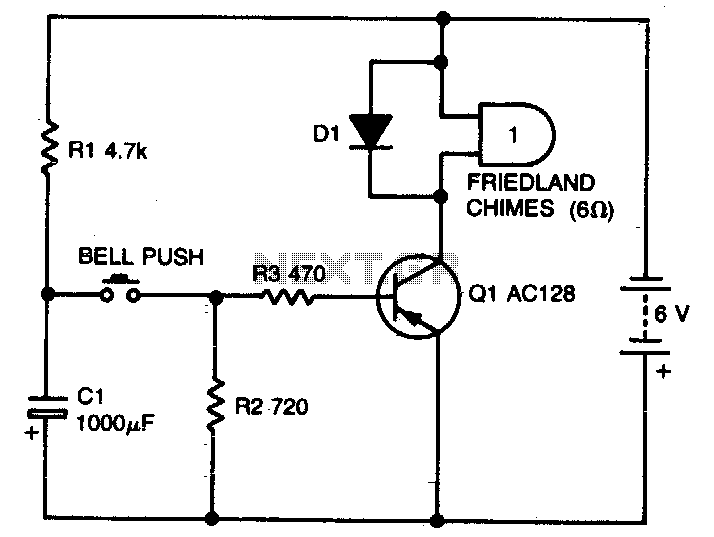
With the specified values, this simple circuit will allow one operation approximately every 10 seconds. Capacitor C1 charges through resistor R1 when the button is released. Increasing the resistance of R1 will lengthen the delay.
This circuit functions as a basic timer using a capacitor and resistor in a charging configuration. When the button is pressed, it initiates the operation, and upon release, the capacitor C1 begins to charge through the resistor R1. The time it takes for the capacitor to charge to a certain voltage level determines the delay before the next operation can occur. The time constant of the circuit, which is the product of the resistance (R1) and the capacitance (C1), dictates the charging time.
The relationship between the resistance and the delay is linear; thus, increasing the resistance value of R1 will proportionally increase the time it takes for the capacitor to reach the threshold voltage required to trigger the circuit's next operation. This can be useful in applications where a precise timing interval is necessary, such as in timers, delay circuits, or pulse generators.
In practical applications, selecting the appropriate values for R1 and C1 is crucial to achieving the desired delay. For instance, if a longer delay is required, a larger resistor or capacitor can be selected. Conversely, for shorter delays, smaller values should be chosen. Additionally, it is important to consider the voltage rating of the capacitor to ensure it can handle the charged voltage without failure.
Proper circuit layout and component selection will ensure reliable operation and longevity of the circuit. The simplicity of this design makes it an excellent choice for educational purposes, as well as for use in basic electronic projects where timing control is needed.With values shown, this simple circuit will permit one operation every 10 seconds or so. Capacitor C1 charges through Rl when the button is released Making Rl larger will increase the delay.
This circuit functions as a basic timer using a capacitor and resistor in a charging configuration. When the button is pressed, it initiates the operation, and upon release, the capacitor C1 begins to charge through the resistor R1. The time it takes for the capacitor to charge to a certain voltage level determines the delay before the next operation can occur. The time constant of the circuit, which is the product of the resistance (R1) and the capacitance (C1), dictates the charging time.
The relationship between the resistance and the delay is linear; thus, increasing the resistance value of R1 will proportionally increase the time it takes for the capacitor to reach the threshold voltage required to trigger the circuit's next operation. This can be useful in applications where a precise timing interval is necessary, such as in timers, delay circuits, or pulse generators.
In practical applications, selecting the appropriate values for R1 and C1 is crucial to achieving the desired delay. For instance, if a longer delay is required, a larger resistor or capacitor can be selected. Conversely, for shorter delays, smaller values should be chosen. Additionally, it is important to consider the voltage rating of the capacitor to ensure it can handle the charged voltage without failure.
Proper circuit layout and component selection will ensure reliable operation and longevity of the circuit. The simplicity of this design makes it an excellent choice for educational purposes, as well as for use in basic electronic projects where timing control is needed.With values shown, this simple circuit will permit one operation every 10 seconds or so. Capacitor C1 charges through Rl when the button is released Making Rl larger will increase the delay.


